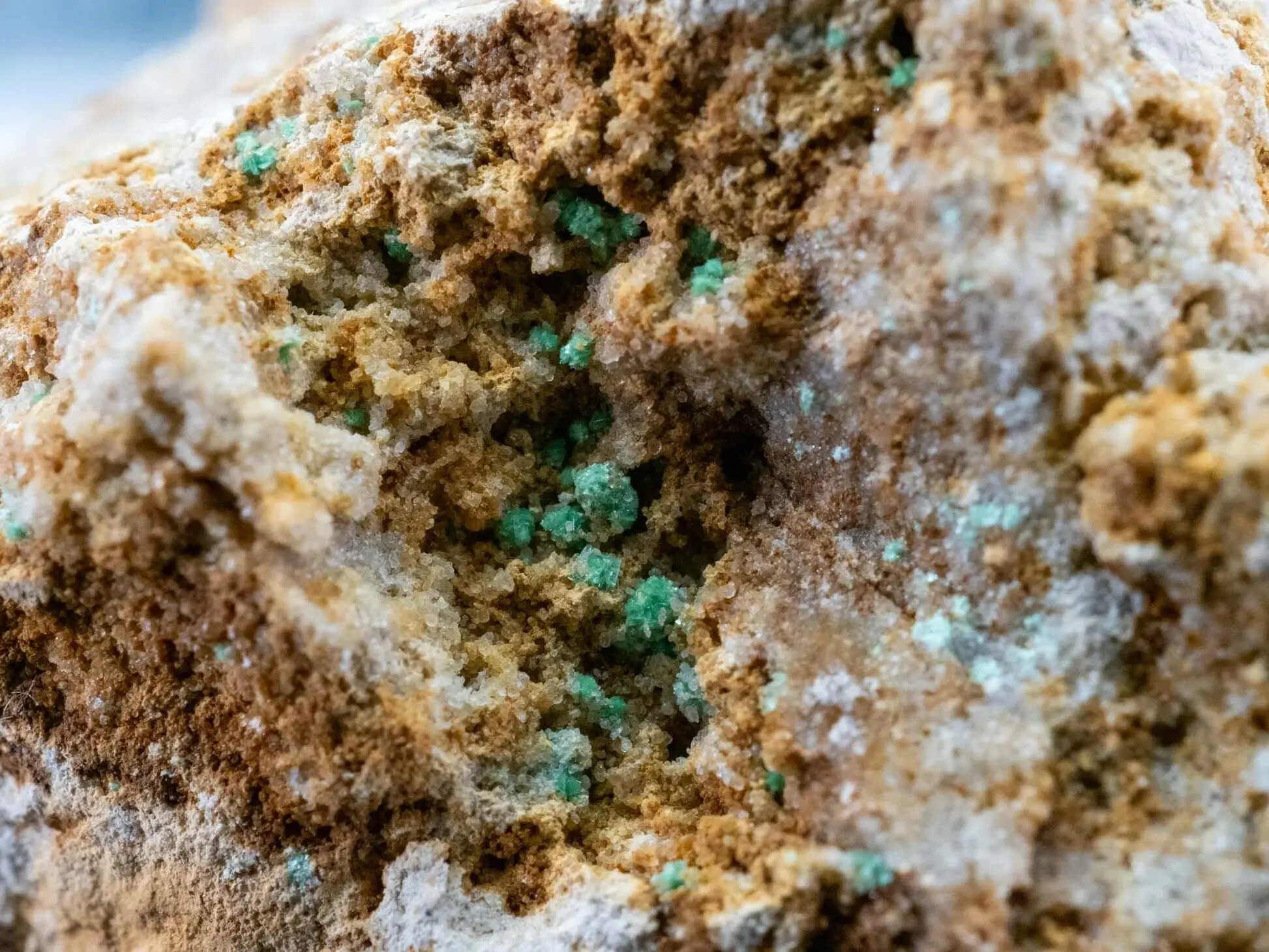
Zeunerite is a fascinating mineral with a unique green hue, often found in uranium-rich environments. But what exactly makes this mineral so special? Zeunerite is a hydrated copper uranyl arsenate, which means it contains elements like copper, uranium, and arsenic. This mineral is not just a pretty face; it has a complex structure that intrigues scientists and collectors alike. Zeunerite can be found in various locations around the world, including the United States, Germany, and France. Its vibrant color and rarity make it a sought-after specimen for mineral enthusiasts. Ready to learn more? Here are 30 intriguing facts about Zeunerite that will deepen your appreciation for this remarkable mineral.
Key Takeaways:
- Zeunerite, a green-yellow mineral, is found in uranium-rich areas and has scientific, educational, and geological uses. It's radioactive and can indicate the presence of uranium deposits, but must be handled with caution due to its toxicity.
- Named after Gustav Zeuner, zeunerite is a prized specimen for mineral collectors and is used in radiation detection and educational settings. Its fluorescence and crystal habit make it visually appealing, but its arsenic content requires careful handling.
What is Zeunerite?
Zeunerite is a fascinating mineral with a unique composition and history. This mineral, often found in uranium-rich environments, has several intriguing properties and uses. Let's dive into some captivating facts about zeunerite.
-
Zeunerite is a hydrated copper uranyl arsenate mineral. This means it contains copper, uranium, arsenic, and water in its structure.
-
The mineral was named after Gustav Zeuner, a German physicist and engineer, in recognition of his contributions to science.
-
Zeunerite typically forms in oxidized zones of uranium deposits. These are areas where uranium minerals have been exposed to oxygen and water, leading to chemical changes.
-
The mineral's color ranges from bright green to yellow-green, making it visually striking and easy to identify.
-
Zeunerite has a monoclinic crystal system, meaning its crystal structure is shaped like a skewed rectangle.
-
The mineral is often found in association with other uranium minerals like autunite, torbernite, and uranophane.
-
Zeunerite is radioactive due to its uranium content. Handling it requires caution and proper safety measures.
-
The mineral has a Mohs hardness of 2.5, making it relatively soft and easy to scratch.
-
Zeunerite's specific gravity ranges from 3.5 to 3.6, indicating it is denser than many common minerals.
-
The mineral is soluble in acids, which can break down its structure and release its components.
Where is Zeunerite Found?
Zeunerite can be found in various locations around the world, often in regions with significant uranium deposits. Here are some notable places where this mineral has been discovered.
-
Germany: Zeunerite was first discovered in the Erzgebirge (Ore Mountains) region, known for its rich mineral deposits.
-
France: The mineral has been found in the uranium mines of the Limousin region.
-
Czech Republic: Significant deposits of zeunerite have been identified in the Jáchymov (St. Joachimsthal) area.
-
United States: Zeunerite occurs in several states, including Colorado, Utah, and Arizona, often in old uranium mining districts.
-
Canada: The mineral has been located in the uranium-rich areas of Saskatchewan and Ontario.
-
Australia: Zeunerite has been discovered in the Northern Territory, a region known for its uranium resources.
-
Namibia: The mineral is found in the Rössing uranium mine, one of the largest open-pit uranium mines in the world.
-
Kazakhstan: Zeunerite occurs in the uranium deposits of the Chu-Sarysu Basin.
-
Russia: The mineral has been identified in the uranium mines of the Transbaikalia region.
-
Brazil: Zeunerite is found in the uranium-rich areas of the Poços de Caldas plateau.
Uses and Applications of Zeunerite
While zeunerite is not widely used in commercial applications, it has some interesting uses in scientific research and mineral collection.
-
Scientific Research: Zeunerite is studied for its unique chemical properties and its role in the oxidation of uranium deposits.
-
Mineral Collection: Due to its striking color and rarity, zeunerite is a prized specimen for mineral collectors.
-
Geological Studies: The mineral helps geologists understand the processes that occur in uranium-rich environments.
-
Radiation Detection: Zeunerite's radioactivity can be used to test and calibrate radiation detection equipment.
-
Educational Purposes: The mineral is used in educational settings to teach students about mineralogy and radioactive minerals.
Interesting Facts about Zeunerite
Here are some more intriguing tidbits about this fascinating mineral.
-
Fluorescence: Under ultraviolet light, zeunerite can exhibit a weak green fluorescence, adding to its visual appeal.
-
Alteration: Over time, zeunerite can alter to metazeunerite, a similar mineral with less water in its structure.
-
Crystal Habit: Zeunerite often forms tabular or platy crystals, which can be quite thin and delicate.
-
Environmental Indicator: The presence of zeunerite can indicate the past or present existence of uranium deposits in an area.
-
Health Hazards: Due to its arsenic content, zeunerite can be toxic if ingested or inhaled, necessitating careful handling.
Final Thoughts on Zeunerite
Zeunerite, a fascinating mineral, has captured the interest of many due to its unique properties and vibrant green color. Found primarily in uranium-rich areas, this mineral is not just a pretty face. It's a source of valuable information for geologists and mineralogists. Handling zeunerite requires care because of its radioactive nature. Despite its risks, it remains a popular specimen for collectors. Understanding zeunerite's formation, composition, and uses can provide deeper insights into the Earth's geological processes. Whether you're a seasoned collector or a curious newbie, zeunerite offers a glimpse into the complex and beautiful world of minerals. So next time you come across this striking green mineral, you'll know a bit more about its story and significance. Happy collecting!
Frequently Asked Questions
Was this page helpful?
Our commitment to delivering trustworthy and engaging content is at the heart of what we do. Each fact on our site is contributed by real users like you, bringing a wealth of diverse insights and information. To ensure the highest standards of accuracy and reliability, our dedicated editors meticulously review each submission. This process guarantees that the facts we share are not only fascinating but also credible. Trust in our commitment to quality and authenticity as you explore and learn with us.


